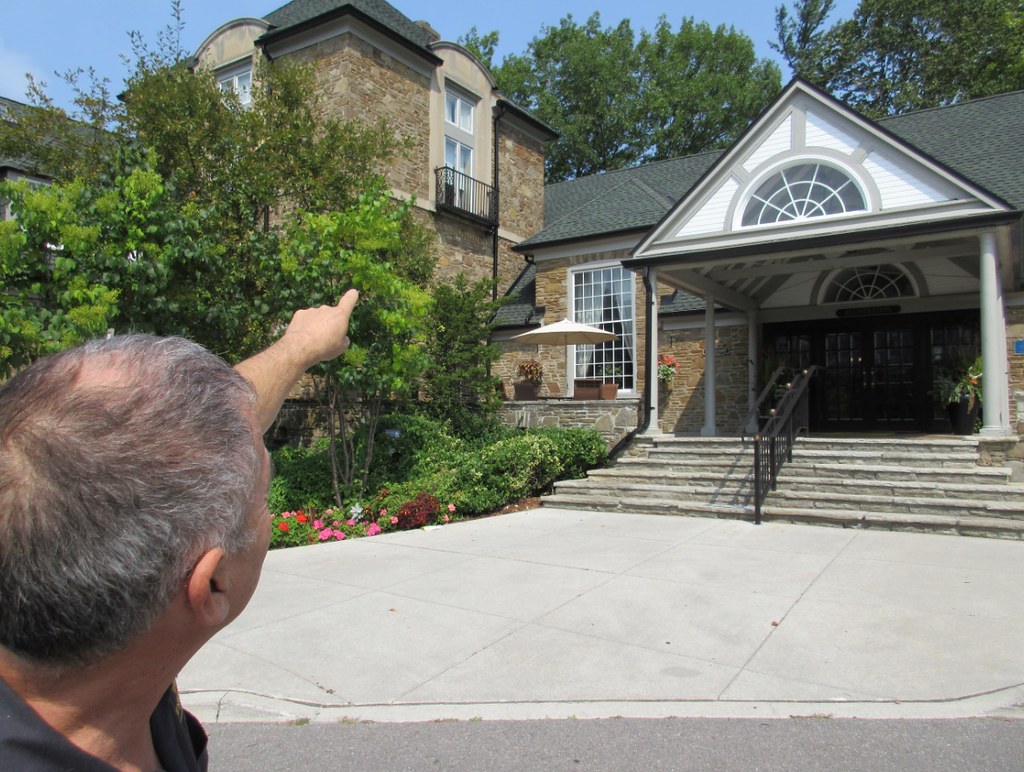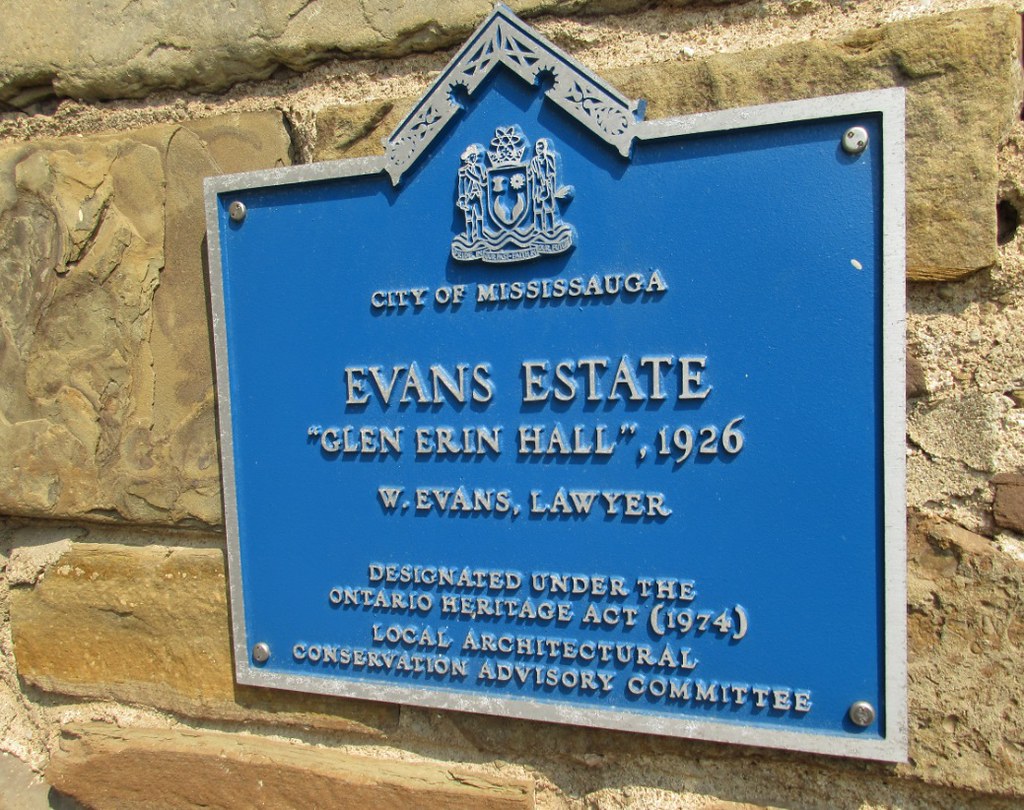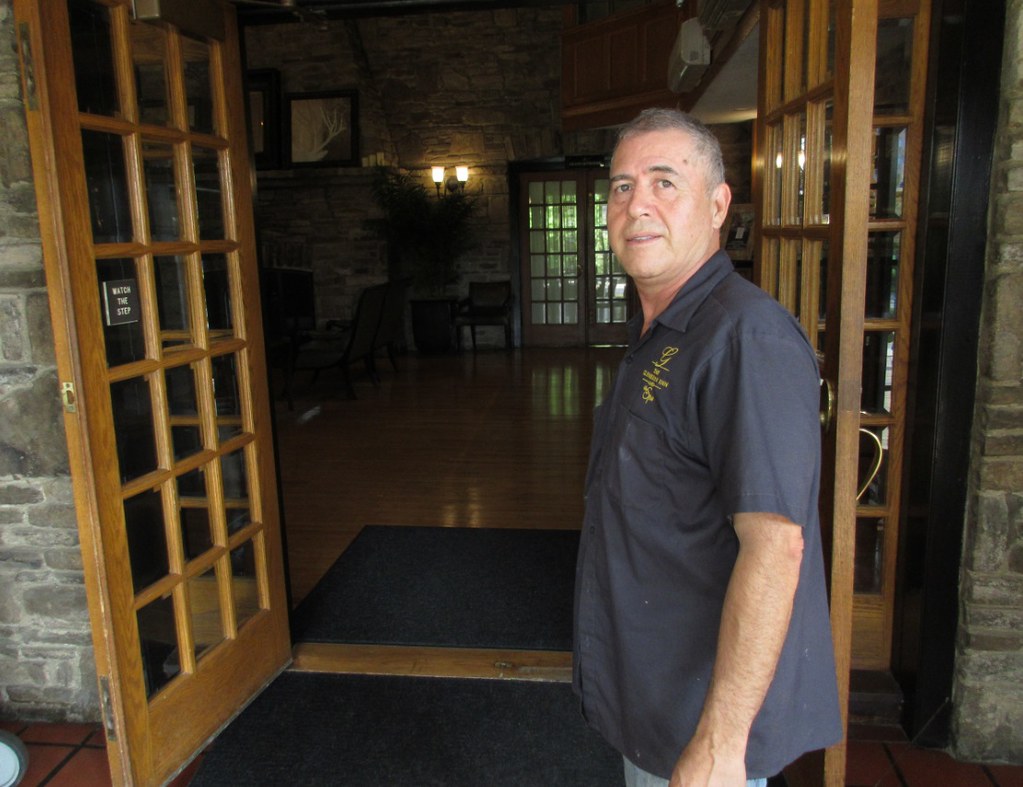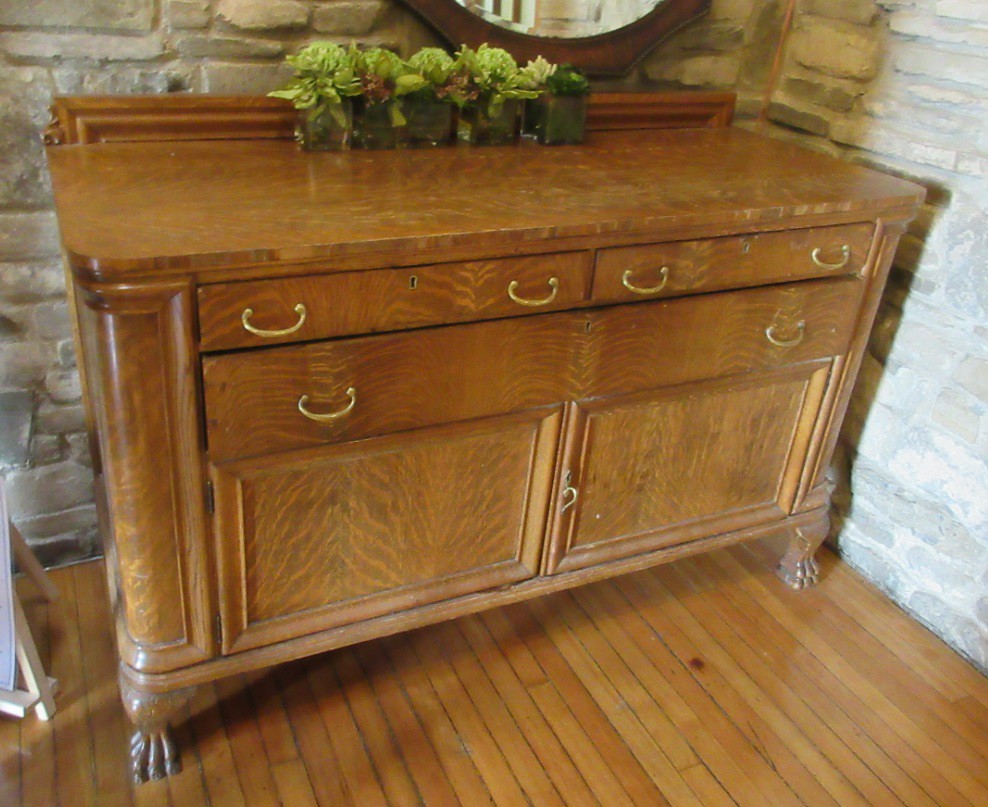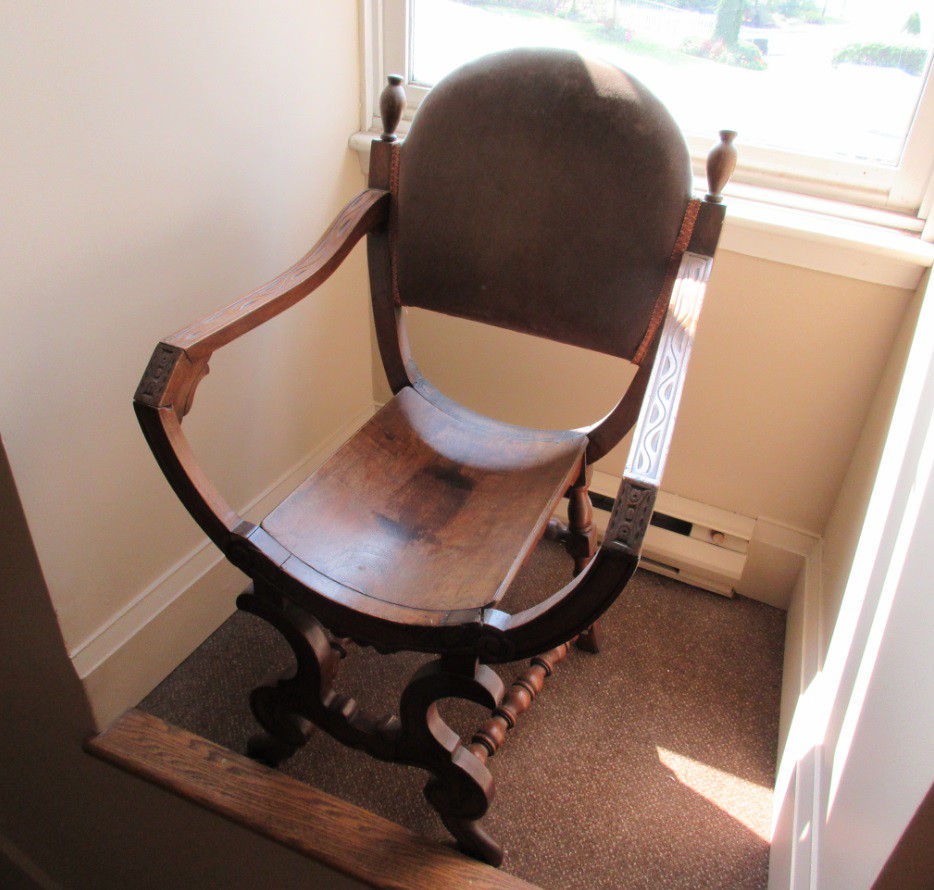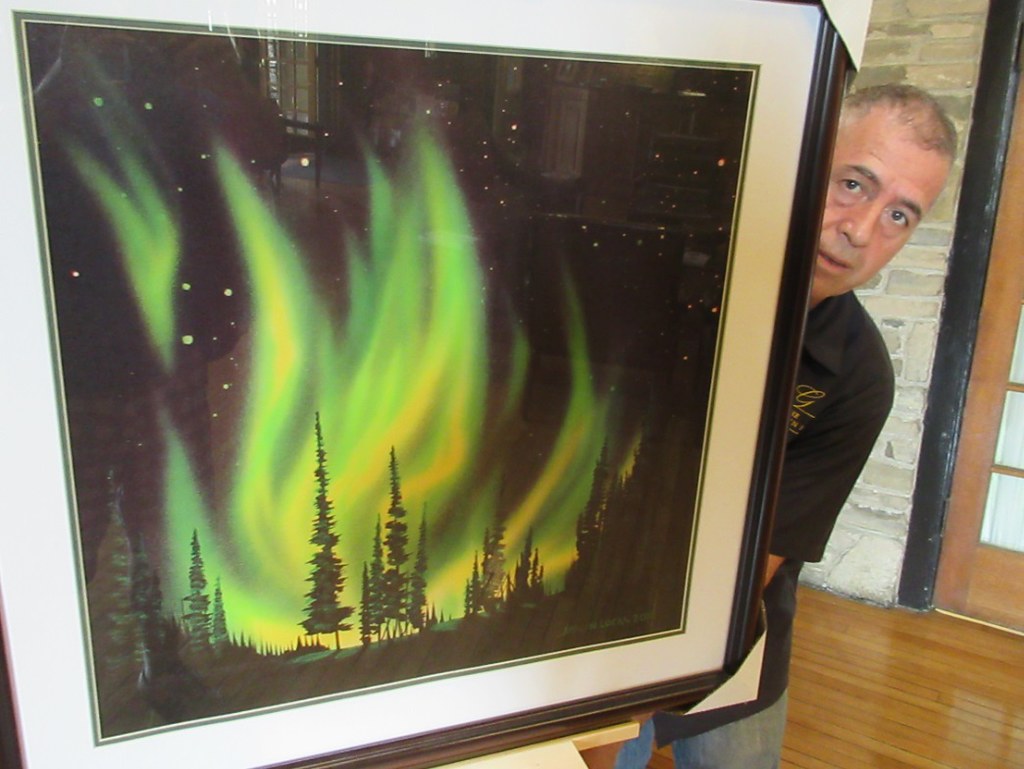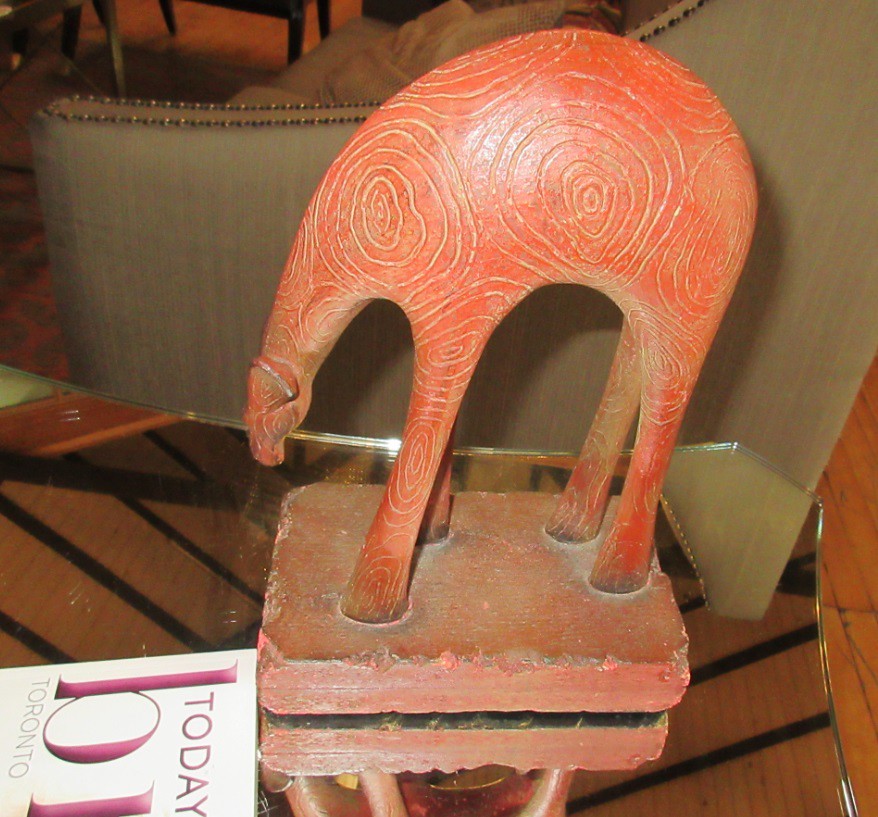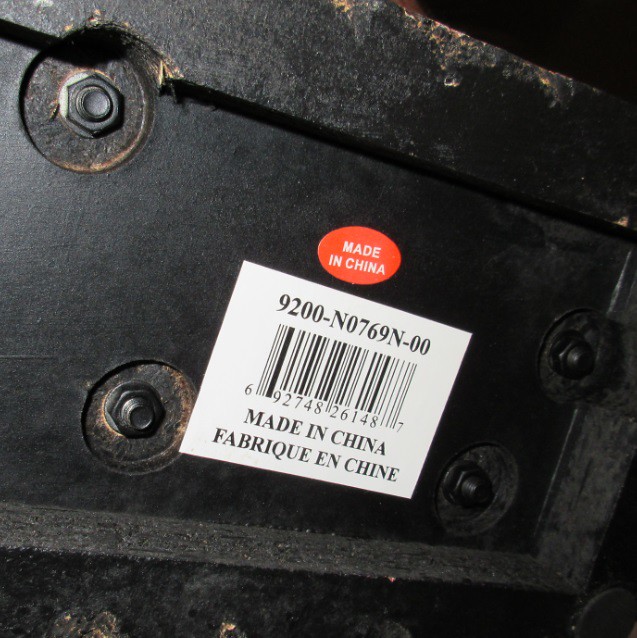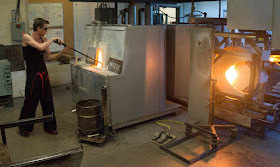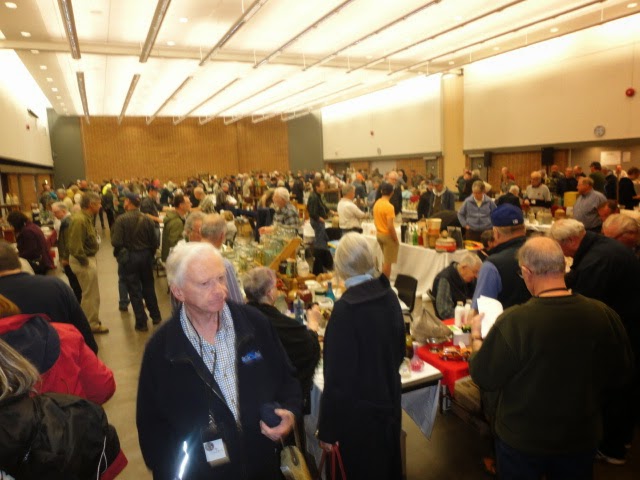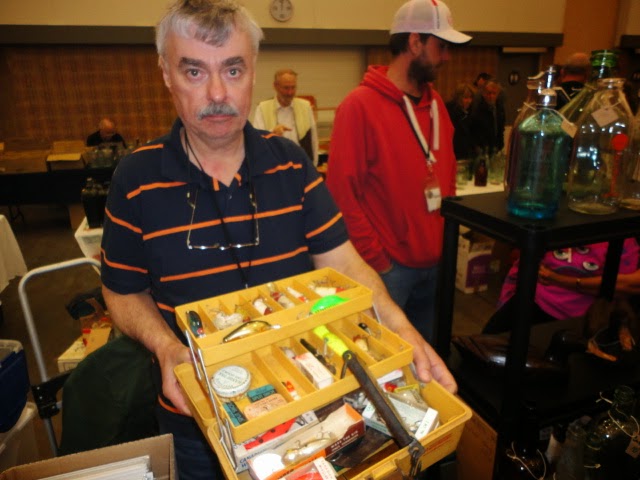This 21st annual Toronto Bottle Show and Sale is a monumental undertaking by the
Four Seasons Bottle Collectors Club and was held this year at the Pickering Recreation Complex located at 1867 Valley Farm Rd.. Much better than previous incarnations, this year's bottle show was very well attended by the public.
Up from his home near Brighton Ontario, Jason Garrison and his buddy Jim took the time to ponder the piles of glass in Pickering last Sunday morning. These two collectors were among five hundred other antiques dealers, pickers and dumpdiggers who made the drive out to the show.
Doors opened at 9am and the cozy venue was absolutely jammed until 1pm which is when I went about interviewing the media-friendly dealers in the room. I talked to dozens of people, and snapped so many pictures my camera battery died... It was the best hour of my weekend.
Expertly conducted by Four Seasons Bottle Collectors members the show went off without a hitch.

Gary Spicer was the first person I assailed and he spoke to me in between sales. See below I got real close on Gary as he held up a Starr Brothers squat soda from Brockville Ontario that was made and filled with carbonated beverage between the years1860 to 1876.
Gary was asking $225 for this rare ad highly coveted soda bottle.
Gary Spicer has been coming to the show for decades as dealer and consumer; he's been collecting antique bottles for forty four years and spend twenty years as a scuba diver, which is a great way to build a big collection. Gary uses the annual show to clear out the clutter from his displays at home and make a few extra bucks to put toward other projects. He was selling some lovely sodas, a few medicines, and while I watched he sold two rare milk bottles to another collector, also from Eastern Ontario.

In very good condition, his Starr bros soda bottle still bears the rusty remains of its 1860s era, primitive cork and wire closure.
Tim Maitland beside his father Jim Maitland holds what he calls a 'transition milk bottle' that was made in the late 1930s or early 1940s and has both ACL (Applied Coloured Label) and is embossed with the words Reid's Dairy right in the glass. And it even has a rear panel with a nurse's face extolling the health virtues of drinking cow's milk. This branding combination makes the bottle extremely collectible, and a real bargain at $325.
GUARD YOUR HEALTH / THERE IS NO SUBSTITUTE FOR MILK
Here's a lovely soda from Orangevillo Ontario.
Down the aisle were a couple more diehard diggers, Barret Nicpon (with banana) and Chris Minicola. Chris collects insulators and bottles
from Peterborough and Lindsay areas, and Barrett collects bottles from London and Strathroy Ontario in addition to insulators.
Chris wanted me to tell you all that if you wanted to find out more about insulators, the 17th annual Perth insulator show and sale is being held on Saturday, May 2nd
from 10 to 2:00 at the Lions Hall at the Perth
Fairgrounds (Halton and Arthur streets) . Admission is free and there
are usually about twenty tables full of insulators for sale or trade along with various displays.
Barrett Nicpon holds up his Canicula brand embalming fluid bottle, which is a 'mortuary antique' and quite desirable in that niche. The 'pleasant smelling' contents are still in the bottle. $24
Canicula Concentrated Embalming Fluid. Canicula Chemical Co. Toronto On. This is also known a 'hardening fluid' in the funeral trade. Great label.
John Goodyear holds up a lovely 1850s era salt-glazed stoneware finger jug, made for A FOSTER / WINE AND SPIRITS MRCHANT / KINGSTON that he'd purchased earlier that day from another dealer at the show. Because he was the jug's buyer and not its seller he declined to give price information, but let me know he got a great deal and was very happy.

Abraham Foster was a grocer who commissioned stoneware to serve his wine and spirits trade in Kingston Upper Canada from the 1840's to early 1860s. He rented 101 Princess St and appears in this
archival record reprinted in the Kingston Whig Standard. "
101 Princess St. Built in 1841 by Captain George Smith and let to grocer Abraham Foster."
John Goodyear is a experienced diver and veteran dumpdigger who has personally recovered much of the stuff on display. He collects bottles and stoneware from Kingston and surrounding area towns, including Preston, Cornwall and Brockville. These are his 'spare treasures', and he reports selling soda siphons and quarter gallon jugs before I arrived at his table, and doing rather well, enjoying the curious crowd.
John's 2015 table wares were
festooned by this green glazed Redware architectural finial.
This custom made cone-shaped tip once adorned the peak of an ornate building, or perhaps the posts of an imposing gate or some equally ostentatious structure that needed to make a point. John was asking $425 for this very unique piece.
David Moncrief is the grandson of John Earl Moncrief, the much celebrated proprietor of
Moncrief Dairy in Peterborough and he smiles politely as I make him hold a creamer from the 1940s uncomfortably close to his face. David tells me that before refrigeration there was a local dairy every few miles as the law forbade long distance transport of raw milk.
David had a steep price tag of $425 attached to the piece because he didn't really want to sell it and was rather hoping to find the perfect trade. He brought his son to the show and the boy was so excited he could barely contain himself.
Jamie McDougall behind a wall of antique bottles, perches over his pint sized poisons.

When I asked Jamie what he wanted to show me he smiled and pointed to a nondescript row of transparent medicines at the bottom of the white display case - Hudson Bay druggist bottles. The small vessels were all various shades of window purple, and Jamie says '...its a very difficult collection to put together.' Its also a difficult collection to photograph.
Terry Matz is Canada's foremost
torpedo bottle lover, collector and expert appraiser. Every year he brings a couple mysteries to the show to share with his friends and poll the public for clues. This year he brought a pair of shoes that are also flasks. The Mrs Two shoe flasks are a matching pair with laces on the right and left respectively.
The glaze is not Rockingham, its Bennington. I asked Terry if these were 'one of a kind', and he said they were as far as he knew, and when I challenged that perhaps they would be more valuable if they were a more common collectible, and he replied no, that's not the case. As unique art pieces they are worth far more than if they were mass produced as part of a production line.
The date 1869 is the biggest clue, and Mrs Two was probably a well to do lady in society and worthy of two shoes full of gin.
I also have to include another lovely pottery piece Terry Matz was selling, a pancake batter jug. Sadly my automatic camera focused on the sign in the background but you get the idea - its like a tea kettle but large with a much bigger spout capable of passing blueberries in batter.
Its probably French Canadian - on one side of the jug a man is drinking beer and smoking a pipe,
while on the other side, an older lady is weeping.
Scott Wallace with a rare treasure. This stoneware jug was made for John Morton in Brantford Ontario proprietor of Morton & Company (1849 – 1856). What's unusual is the face in the decoration. These jugs have flowers, birds and animals but almost never have have face in the cobalt blue glaze that adorn their sides. The jug is in great condition and will be sold in the upcoming
Maple Leaf Auctions for antique bottles and early Canadian pottery.
Bob Harris can be seen eating pizza with his daughter in the background, and when I got around to interviewing him he held up a plastic tool box filled with period fishing tackle. He told the familiar story of finding a an old fishing tackle box rusted beyond repair but filled with mint condition fishing lures sinkers and bobbers many still in their original boxes.
Period fishing tackle is a great thing to bring to a bottle show ... or is it?
Tom Holbrook and Ross Wainscott had some lovely cobalt blue apothecary bottles and medical dispenser vessels and druggist bottles.

This is a rare gem. The four inch square sided 'hospital bottle' has a faded paper label, currently being protected under saran wrap, that indicates it once held five yards of aseptic medical gauze. This bottle was made by the Consolidated Fruit Jar Company in New Brunswick New Jersey for the company that became Johnson and Johnson in New York. This jar evidences the spread of knowledge and the war against germs in the 1890s. People realized that hospital bandages need to be kept clean and dry and free of infection. The price for this rare piece of medical history is $1000.
Here's a bad photo of Scott Jordan, a well respected collector from Ottawa.

Prompted by my curiosity he quietly brought forth his most expensive treasure which is a square sided four panel medicine bottle ..
I didn't record its name .. it seems.. but the side of the bottle is embossed,
Toronto C.W.
C.W. of course means 'Canada West' which are magic words to Canadian bottle collectors.
I will leave a blank spot here which I may fill with more information later..
The bottle takes center stage in his crowded display case.

John Knight attracts beer bottle collectors and soda bottle collectors by offering them free bottle caps to match their collectibles at home. He has over a hundred or more different bottlers here, and its enough to stop most folks who crowd around looking for their missing crown top sodas and beer bottle caps for the bottles they have a home without such closures. Its a gimmick.
Here's a crummy photo of John Knight's best bottle, a green glass soda embossed COPP / GUELPH for which he's asking $2000.
This lovely pontiled soda was made between 1857 and 1862 and is in great condition today - no chips or scuffs. You can see
a terrific photo of a damaged COPP soda bottle that was donated to the civic museum in Guelph and read the comments - its worth a smile.
Here's a lovely candy dish with a artful decoration made to commemorate the arrival of the steam ship in Little Current, Ont. which is the north bridge port on Manitoulin Island in Lake Huron.

The Toronto Bottle Show imparts the joy of hunting and finding cool stuff as dumpdiggers hunt through boxes and table displays to find what they need at home.
The veteran collectors gather and chat about their antiques and hint at upcoming trips and bottle digging expeditions to find and dig treasure filled holes in historic properties. This is big leagues show and tell, and I feel privileged to walk among these folks and relate their passion for the past here on this blog.
The Toronto Bottle Show puts a wealth of information on display.

